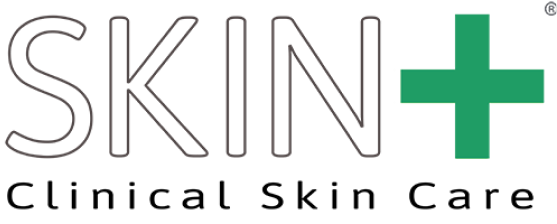If you’ve ever stood in the skincare aisle wondering which face acids will actually help you clear acne, you’re not alone. There are many skincare acids—each with different active ingredients, different strengths, and different ways they work inside the hair follicles. This comprehensive guide breaks down the best-known options for acne vulgaris (the medical name for common breakouts), plus what to consider for acne rosacea (often just called rosacea). You’ll learn how to choose the right acid for your skin type, how to sequence your skincare routine for best results, and what to expect in terms of possible side effects and progress toward clearer skin.
Why “skin acids” help acne
Most acne begins when dead skin cells and excess oil (sebum) collect inside hair follicles, creating blockages that can feed acne-causing bacteria and spark inflammation. Chemical exfoliants (aka skincare acids) loosen those dead cells, normalize shedding, and improve cell turnover:
-
Alpha hydroxy acids/alpha-hydroxy acids (AHAs) are water‑soluble chemical exfoliants that work mainly on the surface to smooth skin texture, brighten skin tone, and help fade dark spots left by breakouts.
-
Beta hydroxy acid/beta-hydroxy acid (BHA), better known as salicylic acid, is oil‑soluble; it penetrates into oily plugs to clear the pore lining.
Because each acid acts a bit differently, the best way to choose is to match the type of acne, your skin type, and your primary skin concerns—then pick the right products and frequency of use.
Mandelic Acid: The gentle AHA that calms inflamed acne
Mandelic acid is an AHA with a larger molecular size than glycolic acid and lactic acid, so it moves more slowly through the skin. That slower penetration often means gentle exfoliation with less skin irritation—a big win for sensitive skin and inflamed breakouts.
How it helps acne:
-
Encourages even cell turnover, so dead cells shed more normally instead of clumping.
-
Provides mild antibacterial and anti-inflammatory effects, which is helpful if pimples are red and tender.
-
Softens the look of dark spots and post‑blemish marks over time, supporting more even skin tone and smoother skin texture.
-
Pairs well with benzoyl peroxide (for killing acne-causing bacteria) and with retinol (for deeper normalization of the pore lining).
Why it’s great for sensitive, inflamed breakouts:
Because mandelic stays a bit more surface‑level than ultra‑penetrating acids, it’s less likely to sting, making it a popular choice for mild acne that flares easily, or for those who’ve felt overly stripped by stronger AHAs.
Try it: Skin+ CytoClear Mandelic Acid 3‑in‑1 Serum blends L‑mandelic acid with lactic acid, azelaic acid, plus hydrators like hyaluronic acid (sodium hyaluronate) and sodium PCA to support the barrier while you exfoliate. It’s designed for acne-prone skin, including sensitive skin, and is an ideal anchor serum in a clearing plan.
Usage notes: Begin with a lower concentration schedule—apply a thin layer to clean, dry skin a few nights a week, then slowly increase daily use if tolerated. Always watch for common side effects like temporary dryness, tingling, or mild skin irritation—dial back if needed and cushion with hydrating layers.
Azelaic Acid: Redness‑reducing, multitasking support (great for “acne rosacea”)
While not an AHA or BHA, azelaic acid is a powerhouse skincare ingredient for acne‑prone and redness‑prone complexions. It offers both anti-inflammatory properties and gentle keratolytic action (it helps loosen cellular buildup), making it useful for bumps and background redness often seen in rosacea (historically called acne rosacea).
How it helps:
-
Calms red, reactive skin thanks to anti-inflammatory effects.
-
Helps unclog pores and softens textural roughness without aggressive peeling.
-
Acts as a tyrosinase inhibitor to fade dark spots and post‑inflammatory discoloration.
Bonus: Azelaic can also complement hormonal patterns by helping regulate excess oil and supporting balance in the pore environment. (On our site, you’ll see messaging about azelaic’s relationship with DHT and oil control in pores—another reason we love it in combination formulas.)
Where to get it in your routine: You’ll find a well‑balanced dose of azelaic inside Skin+ CytoClear Mandelic Acid 3‑in‑1 Serum, so you can calm while you exfoliate—a smart move for sensitive skin with inflamed lesions and lingering redness.
Salicylic Acid (BHA): The pore‑diver for clogs, blackheads, and oily skin
Salicylic acid is the original beta hydroxy acid/beta-hydroxy acid hero. Because it’s oil‑soluble, it slides past sebum, working down into the pore to dissolve the “glue” binding dead skin cells. That’s why it’s fantastic for oily skin, visible comedones, and recurring congestion that leads to new breakouts.
How it helps:
-
Unclogs and refines the pore lining, reducing the formation of whiteheads and blackheads.
-
Offers anti-inflammatory effects, so breakouts look calmer faster.
-
Has mild antimicrobial activity that supports a healthier pore environment.
Try it: Our BHA Serum (2% Salicylic) is a leave‑on exfoliant designed to decongest and smooth while soothing with Manuka honey. It’s especially useful for oily skin, and the product page notes it can be helpful for acne rosacea due to its antibacterial benefits and ability to moderate oil and skin irritation.
What about peels? Salicylic acid peels are a clinic‑tested option when you need a stronger reset. We also offer at‑home salicylic chemical peels in pad format for seasoned users who want pro‑level results in a controlled way.
Usage tips: Begin with small amounts and space applications to find your personal frequency of use (every other day → daily). As with any exfoliant, sunscreen is non‑negotiable to protect the appearance of your skin as it renews.
Retinol (Vitamin A): Deeper normalization of the pore lining + tone/texture gains
Retinoids are beloved because they normalize how the pore sheds and support collagen production—which helps with fine lines, skin texture, and the marks that look like acne scars. They’re a cornerstone in many treatment plans for acne-prone skin and a frequent recommendation from a board-certified dermatologist for persistent breakouts.
Our pick: Skin+ Daily A Retinol Skin Serum pairs slow‑release retinol with mandelic acid, kojic acid, and salicylic acid (AHA + BHA support) to tackle clogging and uneven tone from multiple angles. It’s a targeted, over‑the‑counter option formulated to elevate results without the intensity of prescription‑only acne medication.
How to use for best results: Apply a thin layer at night over dry skin. Start 2–3 nights/week, then increase to daily use as tolerated. Buffer with hydrators like hyaluronic acid and lightweight moisturizers if you experience dry skin or skin irritation.
Supporting acids: Glycolic & Lactic (and how they fit)
-
Glycolic acid (AHA) has the smallest molecule among common AHAs—great resurfacing, but potentially more tingle for reactive skin. Consider it when your skin is resilient or for spaced‑out chemical peels.
-
Lactic acid (AHA) is a touch gentler and draws water to the skin—nice if you’re balancing dry skin with congestion.
You’ll see these AHAs appear within our formulas (for example, lactic in CytoClear and kojic acid/mandelic acid/salicylic acid in Daily A) to refine texture and clarity synergistically.
How to choose the appropriate treatment for your type of acne
Use this quick cheat sheet to match acids to your skin concerns. (When in doubt, start simple; acids layer best when you don’t introduce everything at once.)

If your primary goals include fading dark spots, softening acne scars, and refining skin texture
-
Combine brightening acids (mandelic, azelaic acid, kojic acid) and nightly retinol for collagen production and renewal. Morning vitamin C (especially ascorbic acid) plays well here; apply on clean skin before sunscreen.
Building a smart skincare routine (step‑by‑step)
-
Cleanse: Use a mild acne cleanser (AM/PM). Avoid over‑stripping; you want clean, not squeaky.
-
Treat with acids (start with one):
-
AM (option A): BHA for oily/comedo‑prone days.
-
PM (option B): Mandelic acid serum 3–5 nights/week; or retinol on alternate nights.
-
Hydrate & protect: Layer hyaluronic acid and a lightweight moisturizer. Morning vitamin C (like ascorbic acid) boosts brightening; finish with SPF 30+.
-
Targeted extras:
-
Benzoyl peroxide as an all‑over treatment for inflamed phases (many people misuse it as only spot treatments, but thin, even layers are more effective).
Why “thin layers” matter: Most leave‑on acne products work best in a thin layer all over breakout‑prone zones; this helps prevent future breakouts instead of only chasing existing ones.
Putting it together: three proven routines
Goal: steady clear + calm
AM: Cleanser → NourishRX → SPF.
PM: Cleanser → Daily A Retinol Skin Serum→ Moisturizer.
Goal: texture + tone + breakout control
AM: Cleanser → CytoClear Mandelic Acid 3-in-1 Serum → NourishRX → SPF.
PM: Cleanser → Daily A Retinol Skin Serum → Hydrator → Acne Gel
Goal: oil + blackheads
AM: Cleanser → BHA Serum 2% → HylaVera → SPF.
PM: Cleanser → Daily A Retinol Serum → NourishRX
Safety, expectations, and possible side effects
-
Common side effects of acids include temporary dryness, light flaking, and tingling. Reduce frequency of use or layer more hydration if this persists.
-
Watch for allergic reactions (stinging that doesn’t subside, hives, significant swelling)—stop and consult a clinician.
-
Some acids are not recommended during pregnancy or nursing; always confirm with your provider.
-
Even the best product can backfire if you pile on too many acne ingredients at once. Start low and slow—add one change at a time.
-
Be consistent. Most acne products need several weeks of daily use to noticeably reduce new breakouts and prevent future breakouts.
Quick FAQs
Q: Is “salicylic acid” the same as beta hydroxy acid?
A: Yes—salicylic acid is the go‑to beta hydroxy acid for oily congestion.
Q: Do I still need benzoyl peroxide if I’m using acids?
A: Often yes—BP is unmatched at reducing acne-causing bacteria. Many people get the best acne treatment results by pairing pore‑clearing acids with benzoyl peroxide
Q: Where do retinol and vitamin C fit?
A: Retinol at night for normalization and collagen production; vitamin C (L‑ascorbic acid) in the morning for brightening and antioxidant defense. Space strong actives to minimize skin irritation.
Q: Can acids help with the appearance of your skin beyond acne?
A: Absolutely. The right blend addresses fine lines, skin texture, tone, and lingering marks from breakouts—all while keeping pores clearer.
When you’re ready to get started with effective treatment you can stick to, reach for targeted formulas designed for acne-prone skin:
-
Inflamed + sensitive? Skin+ CytoClear Mandelic Acid 3‑in‑1 Serum.
-
Clogged + oily? BHA Serum 2% (Salicylic).
-
Texture + tone + prevention? Skin+ Daily A Retinol Skin Serum, which also includes mandelic acid and kojic acid for a multi‑pathway approach.
With a focused plan, the best way to clear acne is often the simplest: choose one hero acid, be consistent, and build out the rest of your skin care routine around it. Keep it steady, keep it smart, and enjoy the steadily improving appearance of your skin.


